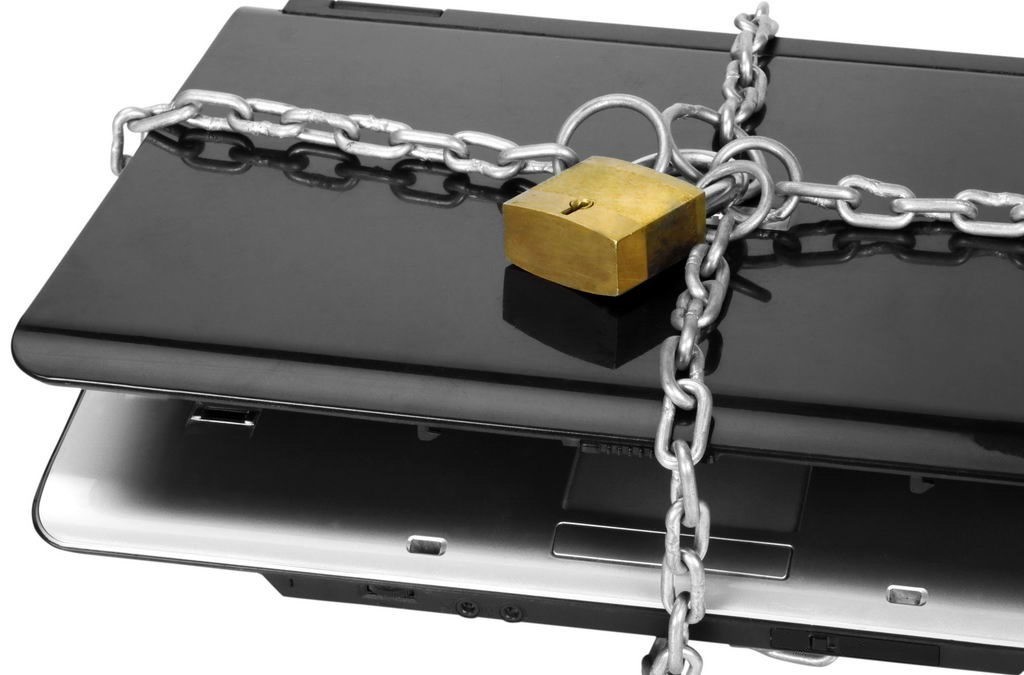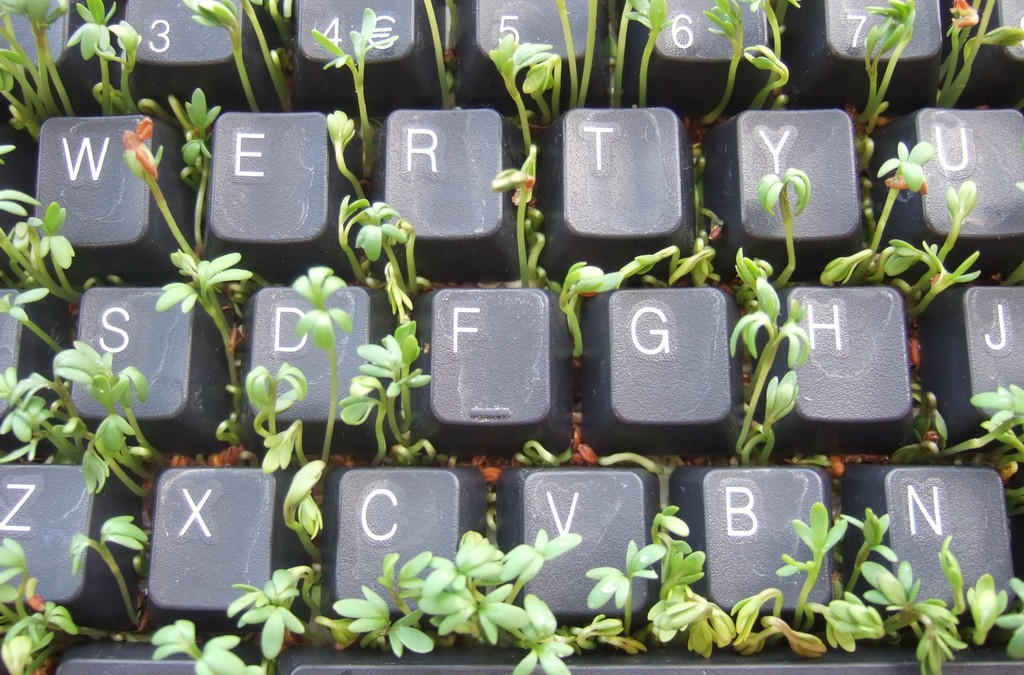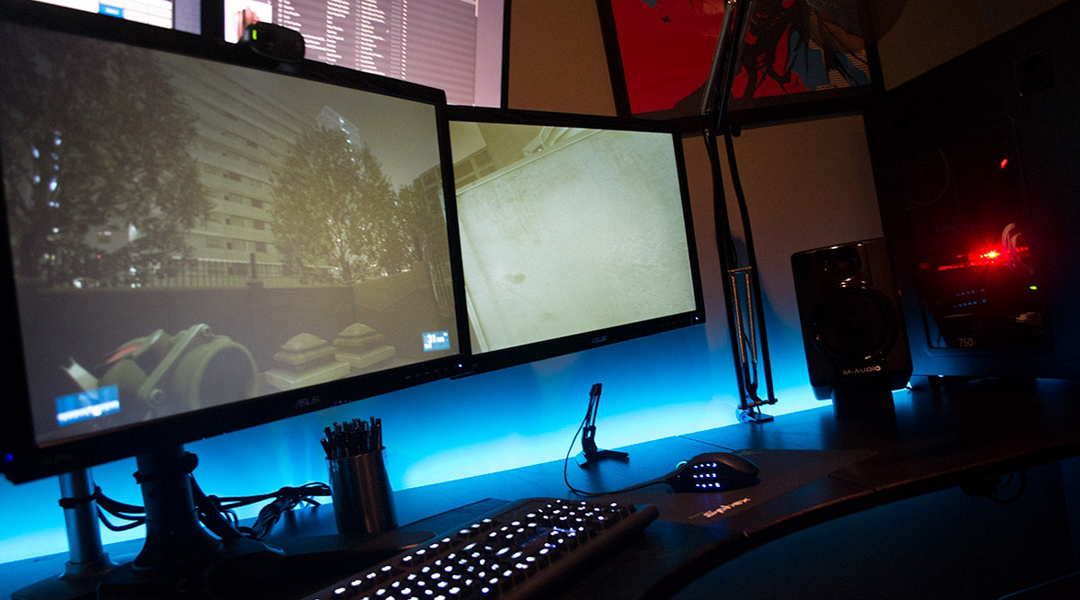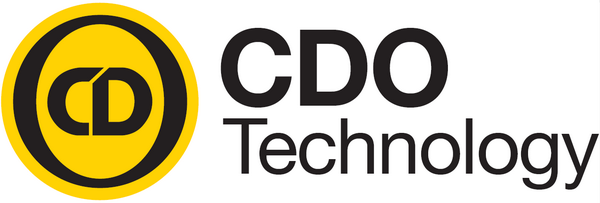
by CDO Technolgy | Jan 4, 2018 | CDO Technology News, Gaming System, Pro Workstations
Happy Birthday CDO Technology – 20 Years in Business!
CDO Technology has been a custom-builder of business and consumer computers, a parts retailer, and a service center in Greenville, SC since 1998. From a humble beginning, CDO now keeps well over 20,000 parts in stock, has some of the very best technical staff in this region and custom-builds both entry level and professional grade servers, professional workstations and gaming desktops for our customers. Our tech repair shop does data recovery and transfers, complete laptop repairs including internal component replacement, mobile device repair, repairs state-of-the-art computers as well as repairs legacy systems, and builds, installs, and maintains business servers and networks. CDO Technology takes the mystery and frustration out of technology by providing solutions to each customer’s specific technology problems. We micro-manufacture computers similar to the way the micro-brewers brew their beer. We use high quality components and blend that with experience and expertise to provide the highest quality customized servers, professional workstations, and computers that run better longer. We also provide a FREE consultation for our business customers on how to make their specific computer systems and technology work better and easier for them.
Most computer manufacturers don’t design and build their computers for the long haul. CDO Technology does! We design our servers, professional workstations, and business systems for each business customer’s specific needs, professionally choose the parts, hand-build them, and provide lifetime service on every system. Our professional workstations are used by engineers, architects, graphic designers, day-traders, web designers, manufacturing product designers, animators, and many more professionals.
Our computers are NOT throw-away or disposal products. Since we design and build our computers for sustainability, they perform at high levels with maximum uptime for many productive years. We also extend the productive life of our computers through proactive maintenance and upgrades with our Lifetime Service Warranty. Sustainability doesn’t just mean long lasting. In our case, it means that they cost less over their productive life than other manufacturer’s computers. The original cost of the computer, the cost of maintenance and computer downtime, the cost of poor performance, and finally the cost of replacement when it prematurely fails all make up the lifecycle cost of a computer system. We complete each computer’s lifecycle by providing a 100% take back or recycling policy for all the computers we sell. We believe our servers, professional workstations, and business systems offer one heck of a value when considering their competitive pricing, long life, and dependable and outstanding performance.
We have a great website, www.CDOTechnology.com where we offer servers, professional workstations, and business systems as well as consumer and game enthusiast computers. They both will provide you with an easy, informative, and pleasurable online shopping experience. While you are there, checkout our online System Configurator where you can choose, customize, and buy your server, professional workstation, gaming desktop or computer to meet your specific needs and budget. For those who want to work with a real person, you can always call, email or come into our storefront for the advice and service from one of our sales experts.
CDO Technology believes that by giving support and advice, selling quality products at a great price, providing fantastic service, and “doing the right thing every time” will keep our customers coming back year after year. And it works! It’s the same reason our sales people will sometimes tell you NOT to buy something from us if they don’t think it’s what you need, and are happy to tell you where to make the purchase if we don’t have what you’re looking for. As of 2018, after 20 years, we’re still growing and grateful to have the opportunity to help those in our community while doing something we love to do.

by CDO Technolgy | Nov 5, 2017 | CDO Technology News, Pro Workstations
Before delving into the benefits to be gained from purchasing non-proprietary workstations for your company, an explanation of what is meant by proprietary is necessary. Many people don’t realize the difference prior to choosing new workstations but it’s a very important consideration.
A proprietary workstation is built from components that are exclusive to a single vendor or entity. In order to make any changes, repairs or upgrades, a company will need to deal with that entity for any replacement or upgraded parts. A good example of this concept can be found in Adobe software. You must use Adobe Reader to be able to work with Adobe Acrobat PDF documents. While this situation isn’t encountered as often with hardware, it does happen.
A workstation built from open standard products, on the other hand, do not require a company to deal with a specific vendor or limit the technology available. Generally speaking, open standard (non-proprietary) hardware is easy to find, through a wide variety of stores or vendors.
There are a couple of important benefits to purchasing non-proprietary workstations that companies should keep in mind:
- Non-proprietary workstations are easier and often less expensive to repair or upgrade with new technologies.
When a company needs to repair a workstation or upgrade it, there are definite drawbacks when dealing with proprietary hardware. Only that specific vendor will have the parts needed to fix or upgrade the computers. This often means delays, as a company must work on the vendor’s timetable without regard to their own needs. It also means that a company cannot shop around for best price or any other considerations.The expense of repairing or upgrading a proprietary workstation isn’t limited to just the cost of the special parts, either. Any time that a workstation is down, it will cost a company money because the employee is unable to do their work properly. Since workstations are rather finely tuned to specific jobs, employees often can not work on a different machine.
- Non-proprietary workstations are much lighter on the environment.
For many companies today, greener is the goal. They want to be socially responsible citizens and make less of an imprint on the environment. Even when the company itself isn’t concerned, their customers can be quite vocal for this cause.
Non-proprietary hardware and systems result in less waste overall. With a proprietary system, when one part is replaced, other parts often have to be replaced as well. These other parts may work just fine but with technology moving so quickly today, when one is replaced, it tends to be better than the old and have more features.This often makes the new part incompatible with older parts and peripherals, necessitating that they also be replaced. Not only does this send more physical goods to landfills, it also costs the companies a lot more money.
For these two reasons alone, non-proprietary workstations make a lot of sense. Unless a company absolutely must use a specific vendor for a specific piece of technology, they will benefit far more from using non-proprietary workstations. Companies save time, money and the environment, not to mention it’s just plain easier.

by CDO Technolgy | May 6, 2015 | CDO Technology News, Maintenance, Managed IT Services
Perhaps one of the most frustrating malware infections found today is file encryption ransomware. The two notable ones are CryptoLocker and CryptoWall. These are classified as malware; they are not technically viruses. Ransomware often infect a computer by being downloaded in a seemingly harmless file. They then encrypt one’s personal data and demand payment in exchange for a decryption key that is stored on a remote server. There is deadline by which payment must be received before the key is deleted; after which, access to the encrypted data is impossible.
Initially it is important to have a basic understanding how one is infected and how ransomware works. Both CryptoLocker and CryptoWall need to be downloaded, and are most commonly received as email attachments; although, they can also be downloaded from websites. These websites are often advertising or media sharing sites. To be infected the file need only be downloaded; it does not need to be opened. The infected files in email attachments often appear as zipped files, but these too need only be downloaded. Once downloaded, the malware uses an asymmetrical algorithm design to generate encryption keys. This means there two keys. One is called the public key which is used to encrypt files, and the other is called the private key which is used to decrypt files. The private key is stored on a remote server controlled by the attacker. It is notable that CryptoLocker and CryptoWall do not lock users out of their computers, as is the case with many other kinds of ransomware. They only encrypt data files.
The Crypto ransomwares usually have a list of file types that it searches for to encrypt. These are primarily different formats of image and text files. Depending on the malware sometimes music is encrypted, and a new version of CryptoWall targets game files. Both CryptoLocker and CryptoWall are aggressive and can infect baked up files on external hard drives and network devices when they are connected to the infected computer and turned on. Some ransomware also sends itself to other people via email from the originally infected computer. When access to an encrypted file is attempted by the owner, a message will be given informing the customer that they need to pay a specific amount of money within a certain period of time to get the private key and gives instructions on how to make payment. Typically 72 hours is the period of time given, but in some cases it will give the owner a few weeks and the cost will rise every week. Both CryptoLocker and CryptoWall usually display a countdown timer with the message. The amount of money asked for is usually around $300 to $500. In certain cases, people have been charged up to around $1000. Some versions of ransomware, especially in the case of CryptoWall, ask for payment in bitcoin. Bitcoin is an unregulated digital currency that can be mined (process of creating new bitcoins) and can be used in certain transactions and exchanged for other currency. Sometimes payment is required through cash card or prepaid credit card because such cards are untraceable. When the specified period of time passes and if payment has not been made, the private key is deleted from the remote server and the owner can never access their files again.
Although very similar, there are some small differences between CryptoLocker and CryptoWall. It is important to note that CryptoLocker is older than its counterpart and is currently rarer. An international, joint law enforcement operation shut down the majority of servers that were being utilized to distribute CryptoLocker when they took out the Gameover Zeus botnet. Additionally, CryptoLocker has been reverse engineered and many private keys have been recovered giving those infected some hope. There are also still several copycat versions of CryptoLocker in circulation; although few neither are as sophisticated nor do these have any design improvements over the original malware.
CryptoWall became more prominent after the demise of CryptoLocker. CryptoWall infects computers in much same way as CryptoLocker; although, it utilizes weaknesses in websites and employs exploit kits to infect users. It can also be contracted in downloads and emails. As before mentioned, CryptoWall demands only bitcoin as payment and typically charges a higher base amount than CryptoLocker. CryptoWall usually provides a website through which infected people can pay. This website is designed to make tracing difficult. CryptoWall is not yet as widespread as CryptoLocker. The primary concern with CryptoWall is that there is no way to recover the files it encrypts without paying the criminals behind it. CryptoWall can always be removed, but documents and images will remain encrypted.
There are some simple but important ways to reduce the risk of infection. The first order of business is to maintain a good anti-virus on one’s computer. Additional tools that target malware are also helpful to keep the system clean. Backing up all of one’s user data, especially text and picture files, is essential. External hard drives and similar devices should be turned off or disconnected from the computer when not in use. This is important because, after the computer is infected, ransomware can easily infect any connected data storage device(s). Caution should be used when surfing the internet and when checking email. Any program or file that is downloaded from the internet should come from the original source, and third party download sites should be avoided. If an email is received that is not recognizable, do not download any attachments from it. All these guidelines are helpful for general protection, as well as ransomware.
CryptoWall is definitely more feared because it is the only ransom malware from which your files cannot be saved if you chose not to pay for the private key. However, the majority of other ransomwares can all be removed without data loss. CryptoLocker is much less of a threat since its downfall; although, it can still cause significant harm as can its copy cat counterparts. Caution and regular backup of files are the two most important pillars to avoid the frustration that encryption ransomware presents.

by CDO Technolgy | Nov 21, 2014 | CDO Technology News, Input Devices, Maintenance
One of the most common computer peripheral that requires thorough cleaning is the keyboard. Keyboards tend to require cleaning quite often due to the propensity of people to eat and drink while they type a document, play a game, or watch a movie. Regular collection of dust is compounded by the accumulation of crumbs and small fragments of all kinds of snacks. In most cases, spilling a drink on a keyboard is more disastrous than crumbs. Because keyboards have many crevices and the key-bed itself is difficult to reach, it is tough to properly clean.
The first step is to determine the best tools needed for cleaning a keyboard. This is vital to avoid physical damage to the keys and the board itself. Isopropyl alcohol is a good cleaning solution to use. Alcohol is typically good for disinfecting and cleaning many things, but more powerful kinds of alcohol should be avoided because they can remove the letter markings on the keys. Therefore, it is important to be sure Isopropyl alcohol is used. There are some electronic cleaning solutions that can also be used. These are typically found in electronics or office supply stores. Another good important item is canned air. A small, hand-held vacuum cleaner can be helpful but not necessary. It is noteworthy to emphasize a small vacuum because small hand held kinds usually have a more gentle suction. It is inadvisable to use a regular vacuum cleaner attachment. The final items needed are Q-tips, a lint-free cloth, and a thin knife or screwdriver. The lint free cloth can be any kind rag or wipe that does not shed lint. Paper towel can be used, but it is not ideal. A final item which can be helpful is a small brush with soft bristles like a small paintbrush.
The first step to cleaning a keyboard is focused on the keys themselves. Always be sure to unplug the keyboard first if it is wired. Holding the keyboard upright on its side, use canned air to blow the entire surface and between the keys to clear loose lint and crumbs. Be sure to keep the can of air upright at all times. Next take the lint-free rag or cloth and dampen it with the alcohol or cleaning solution. Avoid soaking the cloth and never pour or spray the cleaner onto the keyboard. Firmly but gently wipe off the surface of the keys. To clean the sides of the keys, use a Q-tip or the small brush dipped in alcohol and run it around each key. The brush can also be used in dusting of the keys.
The most difficult step in the cleaning process is key removal. Prior to key removal, take a picture of the keyboard or draw a layout of the keyboard. This is important for putting keys back on correctly. To remove the keys from a regular desktop keyboard, insert the thin knife or screwdriver under the corner of a key and very gently pop it up. This must be done with great care because the keys could break if too much force is used. If a key does not pop off willingly then reposition the tool, but do not force the key off. It is recommended not to do this when cleaning a laptop keyboard. The plastic clips attaching laptop keys to the board can break very easily, and it is difficult to reattach the keys. It is recommended to remove only letter and number keys and the F1 through F12 keys; larger keys like the SPACE bar and SHIFT keys are difficult to reattach. If the removed keys are still dirty, they can be washed separately with dish soap and must be air dried.
Once the keys are removed it is time to clean the key-bed. Use the canned air or the small vacuum to clear out the key bed of remaining debris and crumbs. Again use the lint-free cloth and alcohol to wipe out the key bed. Make sure the cloth is damp not soaked and dripping. The key bed can be wiped as much as is needed to remove what the vacuum and canned air failed to remove. Afterward, it is acceptable to dry it a bit with a dry cloth, but it should be allowed to fully air dry. Do not reattach the keys until both the keys and the key-bed are completely dry. Reattaching the keys is fairly easy as long as the sketch or picture of the keyboard layout is referred to. To reattach the keys place them on the correct contact point and press them firmly. They should snap on easily.
Although it may appear complicated, cleaning a keyboard is not as difficult as it seems. Of course, all cleaning should be done with care and regularly no matter how easy. Doing a full cleaning of a keyboard periodically is important. Preventing build up of debris keeps the typing and/or gaming experience fast and enjoyable.

by CDO Technolgy | Aug 12, 2014 | CDO Technology News, Maintenance, Monitors
Safely and Efficiently Cleaning LCD’s.
As the old CRT (cathode ray tube) monitors continue to rapidly exit the scene of everyday life, they are replaced by the sharp, high resolution LCD (liquid crystal display) monitors. Like all screens, LCD’s collect significant amounts of dust and smudges. The question that many encounter is, “How can I clean my LCD safely?”. It is important to clean an LCD monitor correctly to get the best experience from it.
The first step is to examine what not to use to clean an LCD. First, standard cleaning products that contain chemicals like ammonia or alcohol should be avoided. A common product people have used is Windex. These kinds of chemicals can damage an LCD by causing the coating on the LCD to degrade or come completely off. Regular tap water is also not advisable due to the chemicals and minerals it contains. It is also important to avoid spraying any product directly onto an LCD. LCD monitors are not water tight, and any liquid could seep in and damage the internal components of the monitor.
A second issue to address is what kind of cloth not to use when wiping the screen. Regular cleaning rags can be abrasive and have small bits of material that can scratch the screen. Any kind of paper products, like paper towel should not be used on an LCD due to their rough constitution. Although they may appear or feel soft, paper products can still damage the LCD’s surface.
What is the correct way? As far as cleaning solutions go, many office supply and computer stores sell special solutions specifically designed for LCD’s. Another common option is to make your own solution which normally consists of 50% distilled water and 50% vinegar. Distilled water can also be used by itself because it has been purged of minerals and chemicals. The best cloth to use is a microfiber cloth. Microfiber cloths are often sold with LCD monitors or with screen cleaner solutions. Another option is special, anti-static wipes designed particularly for cleaning an LCD, although these are less commonly sold.
Once the necessary items are assembled, the cleaning of the LCD can begin.
- First, turn off the LCD monitor. It is also recommended that the monitor be unplugged to reduce risk of electric shock.
- Second, it is suggested, though not necessary, to use some canned air to blow any loose dust of the surface of the LCD.
- Next, apply the cleaning solution to your microfiber cloth. Only get the cloth damp not soaked. Using a spray bottle to apply it can help accomplish this.
- Finally, gently wipe the LCD. To get the best results, wipe horizontally across the screen, while being sure to only press very gently. Allow the LCD to air dry afterward.
Following these guidelines can ensure you get the best visual experience from your LCD monitor. Cleaning your monitor properly and regularly can also improve its life span and overall performance.





